TEXT AND PHOTOGRAPHS BY KASTURI MUKHERJEE
Asansol, West Bengal
As I begin to write this piece, there is a short story that keeps coming to mind, written by Molly Panter-Downes, the New Yorker journalist with a vigorous output, known for her London Letters and War Notes, but remembered today for her wartime short stories. The short story is called “Battle of the Greeks” and describes Mrs Ramsay’s Red Cross Sewing Party in a little Sussex village working to help men in war and the many gossips and debates that these housewives engaged in wartime England. My mother is no Mrs Ramsay or Mrs Peters or Mrs Twistle living in Sussex and she has never been to a sewing party all her life. She is a simple woman who has lived her life in a small industrial town in India and has devoted herself to homemaking. And yet both these sections of women engage their art in a certain utility towards helping a community.
Ma’s penchant for the handicrafts always mesmerises me. Sewing, embroidery and knitting are her forte. All throughout my childhood, numerous times, I have seen Ma sitting by the window on my grandfather’s old wooden chair, a cushion to the back, a short plump stool at her feet, a table full of necessary paraphernalia by the side, sewing clothes, or covers or repairing sarees and pyjamas or embroidering designs on kerchiefs. Sitting alone and absorbed in the quiet afternoon light, her fingers pressing on the needle poking in and out through the weave of the cotton cloths, the two slim bangles on her wrist tinkling to the movement, this moment in time has always been her space. Among the knick-knack paraphernalia on the side table, always lies an oblong, old, tiny, tin box full of buttons: small, large, coloured, wooden, fat, slim, buttons in all shapes and sizes. Her small collection of buttons; not a collector’s collection, more of a user’s rather. When in trouble and a button is lost, that box is always her go-to. Once she finishes using it, she lids the box carefully and keeps it inside her closet, a user’s treasure. A few months back, I lost a small, flat wooden button from a chequered, yellow cotton dress that I love to wear and the box was out of the closet again, her collection of buttons laid bare, calling out to me to be recognized.
My mother, Krishna, is the younger of the two daughters of a very ordinary couple who had shifted to an industrial town from a remote village in West Bengal in early 1950s. She grew up seeing her mother repair and mend clothes at home, make tablecloths and duvets, stitch kanthas, work on the sewing machine, a few of the things that the then housewives commonly did. Her mother, Bani, was a very economical woman and someone who, though not aware of the concept of sustainable living back in the days, practiced it with a certain fervour.
Ma picked up stitching from her mother; young in the 70s and educated in a convent, she, of course, had stylised and western motifs at her disposal, along with the more traditional Indian ones. Being an introvert, it was an indulgent practice she immensely enjoyed. Later in life, she also picked up the habit of living economically and sustainably from her mother and realized the daily uses of her art. Ma has never contributed to a wartime cause like Mrs Ramsay & co. but home is a smaller social unit and the many contributions of the housewives often go unnoticed. Hence the buttons collected over the years, from various other worn out garments and stacked in the box for future use.
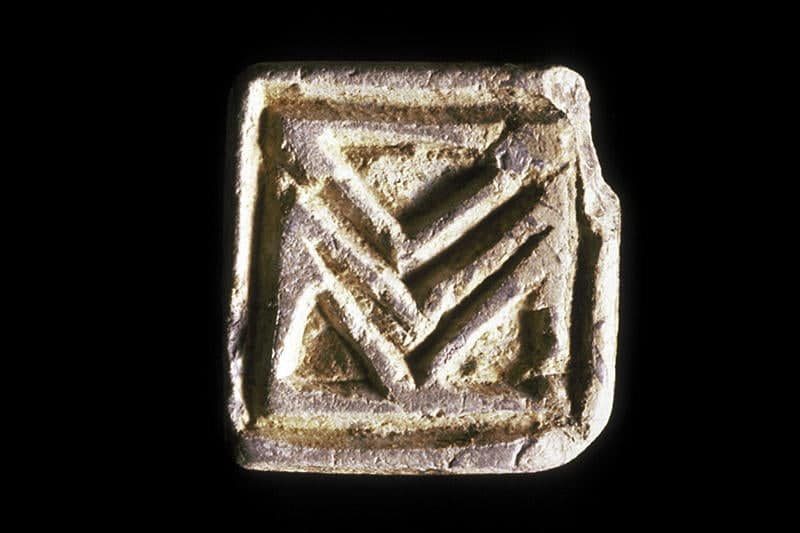
Buttons or button-like objects have been discovered in the excavations of Indus Valley Civilization, the Bronze Age sites in China & Ancient Rome. Buttons made from seashells (later revived in the 18th and 19th centuries, especially by American manufacturer John F. Boepple in the 1890s) were used during the Indus Valley Civilization for ornamental purposes. Ian McNeil holds that: “The button, in fact, was originally used as an ornament than as a fastening, the earliest known being found in Mohenjo-daro in the Indus Valley. It is made of curved shell & about 5000 years old.” Lynn White asserts that functional buttons with buttonholes for fastening or closing clothes are said to have appeared first in Germany in the 13th century & became popular with the rise of snug-fitting garments in 13th & 14th century Europe. The wearing of gold, silver and ivory buttons was an indication of wealth and rank.
But it is with the advent of the Industrial Revolution in the 18th century that buttons came into widespread use, among the masses too. Matthew Boulton, the English manufacturer from Birmingham and partner of James Watt, specialised in the production of small items (hinges, buttons, buckles, hooks, etc.) in a range of materials including metal and glass, which were collectively known in the 18th century as “toys”. The buckle trade collapsed but the button trade flourished in Birmingham in its place. In the 18th century, luxury metals and ivory largely replaced fabric, however, embroidered buttons in designs to complement particular garments were popular. Charlotte, who is a member of the Birmingham branch of the Guild of Weavers, Spinners & Dyers, and the National Association GPC, in an article on her blog English Girl at Home dated June 26th , 2016 writes,
[…]Originally, the button was a by-product of the slaughter-house, with buttons produced from animal hoof and horn. The raw hoof and horn had to be heated and moulded, and then turned and polished by hand. However, the Birmingham button trade was diverse including pearl, shell, metal, cloth-covered, and later plastic, buttons. Shell and pearl were imported for the production of buttons, with so much waste shell produced by the process that pits were dug in Birmingham’s Jewellery Quarter to bury it. Many buildings today are said to have their foundations built on mother of pearl.
The button trade is one in which the development of assembly line processes and division of labour developed. In the 18th century, it was calculated that each button would pass through fifty pairs of hands, with each individual worker handling up to 1,000 buttons per day. By 1865 machines began to be introduced into the button trade, with the number of workers employed reducing to around 6,000 compared with about 17,000 in 1830, with a large number of women employed. Even after mechanisation was introduced, it took around 14 workers to put together a single button […] Pearl buttons, because of their frailty, continued to be made entirely by hand. Birmingham led innovation in the button trade […]

Made in Madras, c. 1850, agate and carnelian 
Made in Netherlands, c.19 th century, silver filigree
Some museums and art galleries hold culturally, historically, politically or artistically significant buttons in their collection. The Victoria & Albert Museum is an example. The two photos above are buttons from their collection. The collection of agate and carnelian buttons is “understood to have been fashioned in Chennai (Madras) before 1879 when they were acquired by London’s Indian Museum, shows a range of shapes and styles. Traditionally, most of the fashioning and polishing was accomplished using abrasive-charged discs and wheels that were turned on bow-driven lathes, with the holes being made with a bow-driven drill. Most of the carnelian raw material is routinely subjected to heat-treatment to dry it and to permanently intensify the colour.” The silver filigree button is one among many in their collection and “are called ‘braamknopen’ (blackberry buttons) in Dutch, one of the commonest types of Dutch buttons. They are now considered typical of Zeeland, but in the 18th and early 19th century they were worn throughout the Netherlands, and along the North Sea coast in Germany as well. They are still being made today in the same pattern as in the 18th century.”
Hammond Turner & Sons, a button-making company in Birmingham hosts an online museum with an image gallery and historical button-related articles, the most famous being one by Charles Dickens himself. Dickens first published his article on buttons in the weekly journal, “Household Words” on Saturday, April 10, 1852. This essay on buttons titled “What there is in a Button” is where he writes of his visit to Hammond Turner & Sons in Birmingham which happened to be England’s largest button making industry. Here are a few interesting extracts from the essay:
When little children are shown old portraits, they are pretty sure to notice the large buttons on the coats of our forefathers […][…] buttons were covered by women, and by the slow process of the needle. Women and girls sat round tables, in a cosey [sic] way, having no machinery to manage; and there was no clatter, or grinding, or stamping of machinery to prevent their gossiping as much as they liked. Before the workwomen lay moulds of horn or wood, of various shapes, but most commonly round, and always with a hole in the middle. These moulds were covered with gold or silver thread, or with sewing silk, by means of the needle. One would like to know how many women were required to supply, at this rate, the tailors who clothed the gentlemen of England ? At last, the tailors made quicker work, by covering the moulds with the material of the dress […]
Here are long rooms, large rooms, many rooms, devoted to the making an article so small as to be a very name for nothingness. "I don't care a button," we say: but, little as a button may be worth to us, one single specimen may be worth to the manufacturer long days of toil and nights of care, and the gain or loss of thousands of pounds. We can the better believe it for having gone through those rooms. There we see range beyond range of machines—the punching, drilling, stamping machines, the polishing wheels, and all the bright and compact, and never-tiring apparatus which is so familiar a spectacle in Birmingham work-rooms. We see hundreds of women, scores of children, and a few men; and piles of the most desultory material that can be found anywhere, one would think—metal plates, coarse brown pasteboard, Irish linen, silk fringes, and figured silks of many colours and patterns […]
In these small specimens of art, the details are as curious, the composition as skilful, the life of the living as vivid, and the aspect of the dead as faithful, as if the designer were busy on a wine-cup for a king, instead of a button for a sporting jacket. […]

The Memorable Era or Dated Eagle 
Button Dotted GW Button
On the other side of the Atlantic, buttons were just as famous and collectible. The Smithsonian Institution has a significant collection of buttons. The first presidential inauguration of George Washington in 1789 inspired craftsmen to create a variety of commemorative buttons with patriotic designs. Known to collectors as “Washington Inaugurals” they were made of copper, brass or Sheffield plate, in large sizes for coats and smaller sizes for breeches. In the photographs above are two such buttons currently at display at the Mount Vernon estate. Made in twenty-two patterns and hand-stamped, they are now extremely valuable cultural artefacts. Then again, between about 1840 and 1916, clothing buttons were used in American political campaigns which still exist in collections today. Initially, these buttons were predominantly made of brass (though horn and rubber buttons with stamped or moulded designs also exist) and had loop shanks. Some of the most famous campaign buttons were those made for Abraham Lincoln. Memorial buttons commemorating Lincoln’s inaugurations and other life events, including his birth and death were also made, and are also considered highly collectible.
My mother has no exotic buttons in her box. She is not a collector. Her box contains regular, mundane buttons that she thinks she might find useful. Let’s take a look at a few type buttons from my mother’s collection.
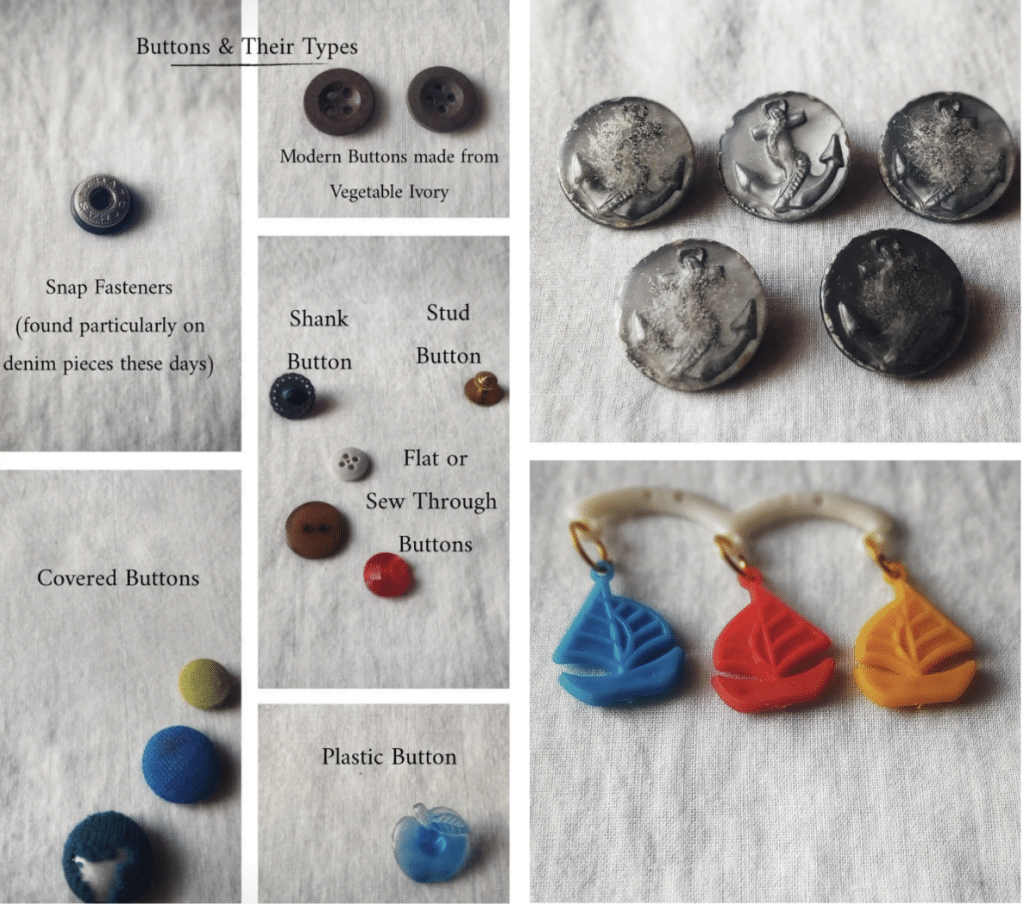
The buttons in the picture with anchors inscribed on them were from a navy blue cardigan that came all the way from London for my mother when I was a kid. They are made of some kind of alloy with a transparent fibre on the button to lock the design in and are around 2 cm in diameter. I remember it had a cable design and she kept it for wearing on special occasions during the winter months. “The buttons”, Ma says, “are more of a memory. It was a gift from Miriam, an elderly relation living in London. She knew my penchant for woollen garments. Miriam is no more. The cardigan wore out. These buttons remain. The navy blue colour of the cardigan must have prompted this fashion of buttons.” The plastic ship buttons in the picture happen to be the smallest buttons in my mother’s box, meant for a child’s clothing. They are tiny and the cutest ones. Ma says, “I bought these buttons when I was knitting a cardigan for my baby niece. It was probably the late 70s. These in the box are extras from what I used on that cardigan.” These buttons are traces, traces of moments, relationships and love.
My mother’s button box is a curious thing in itself too. It was probably a tin biscuit box titled after a company called James Lord & Sons in Calcutta. On talking to my classmate and friend, Soumali Sengupta, one evening, she took the trouble to find out about it and informed me, “Apparently [James Lord & Sons] were a company registered in 1946 and were involved in production, processing and preservation of meat, fish, fruits, vegetables, oil and fats. They were also listed as sugar manufacturers.” On asking if the company still operates, Soumali mentioned, “I think it did till 2009. It seems to now have been liquidated …How strange this association. I could not help but notice that in 1946, just before independence one James Lord opens a company, and we are discussing this in 2019, looking at a box. Hidden treasures of life.”
That is just it about buttons; we skim over this regular necessity with ease and yet it forms such a crucial little part of our clothing. I suppose Ma recognizes that and thus keeps them in her box for use. She is amazed when I share with her all these various historical details and tell her that much remains to be unearthed. She smiles over cup of tea. I quote to her Dickens: Here we had better stop, though we have not told half that might be related on the subject of buttons. It is wonderful, is it not? that on that small pivot turns the fortune of such multitudes of men, women, and children, in so many parts of the world; that such industry, and so many fine faculties, should be brought out and exercised by so small a thing as The Button.
References (in order of appearance):
- “Battle of the Greeks” from Good Evening Mrs. Craven by Mollie Panter-Downes and published by Persephone Books, London
- Photograph of the Button Seal from Harappa
- Ian McNeil, An Encyclopaedia of the History of Technology, Taylor & Francis, (1990)
- Lynn White, “The Act of Invention: Causes, Contexts, Continuities and Consequences”, Technology and Culture, Vol. 3, No. 4 (Autumn, 1962).
- “British Textile History: Birmingham – Leather, Buttons & Thimbles”, June 26 2016, English Girl at Home, Blog by Charlotte
- Encyclopaedia Britannica Online
- Photograph of Ornamental Buttons from The Victoria and Albert Museum
- Charles Dickens, “What there is in a button”, Household Words, Vol. V No. 107, 10.04.1852
- Photographs of the Washington Inaugurals from the Website of George Washington’s Mount Vernon estate

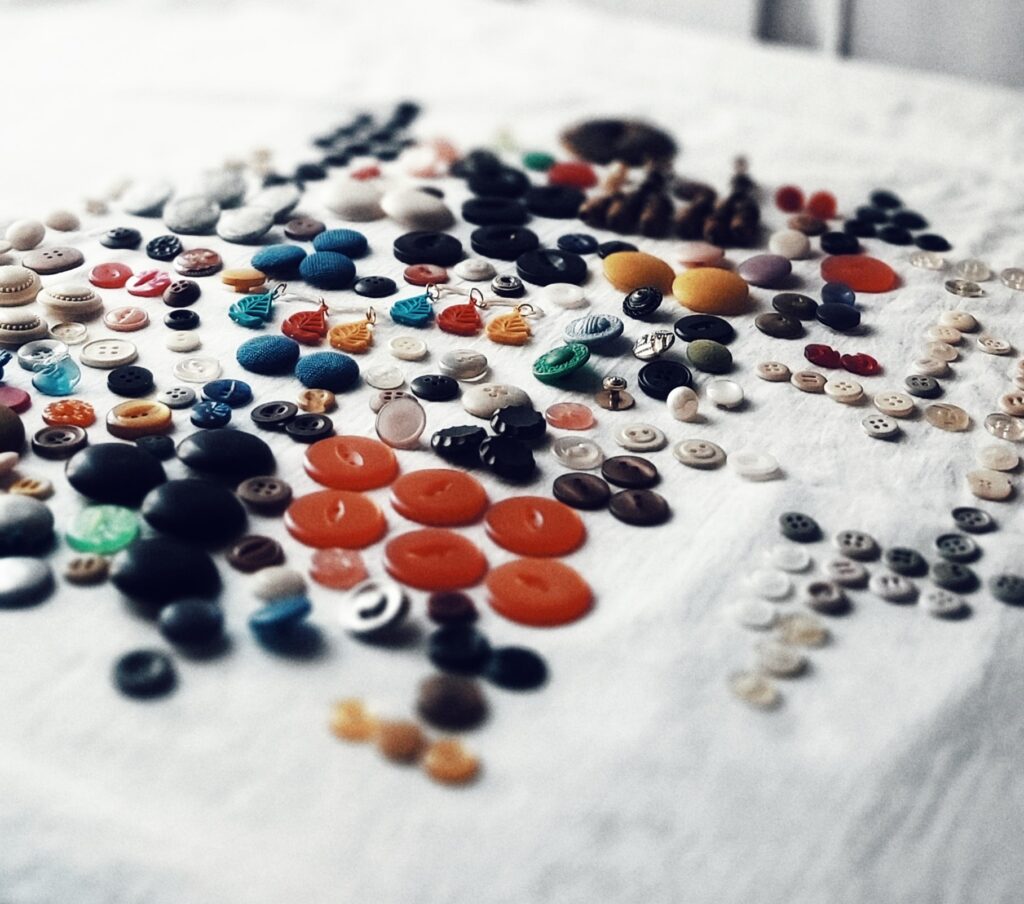
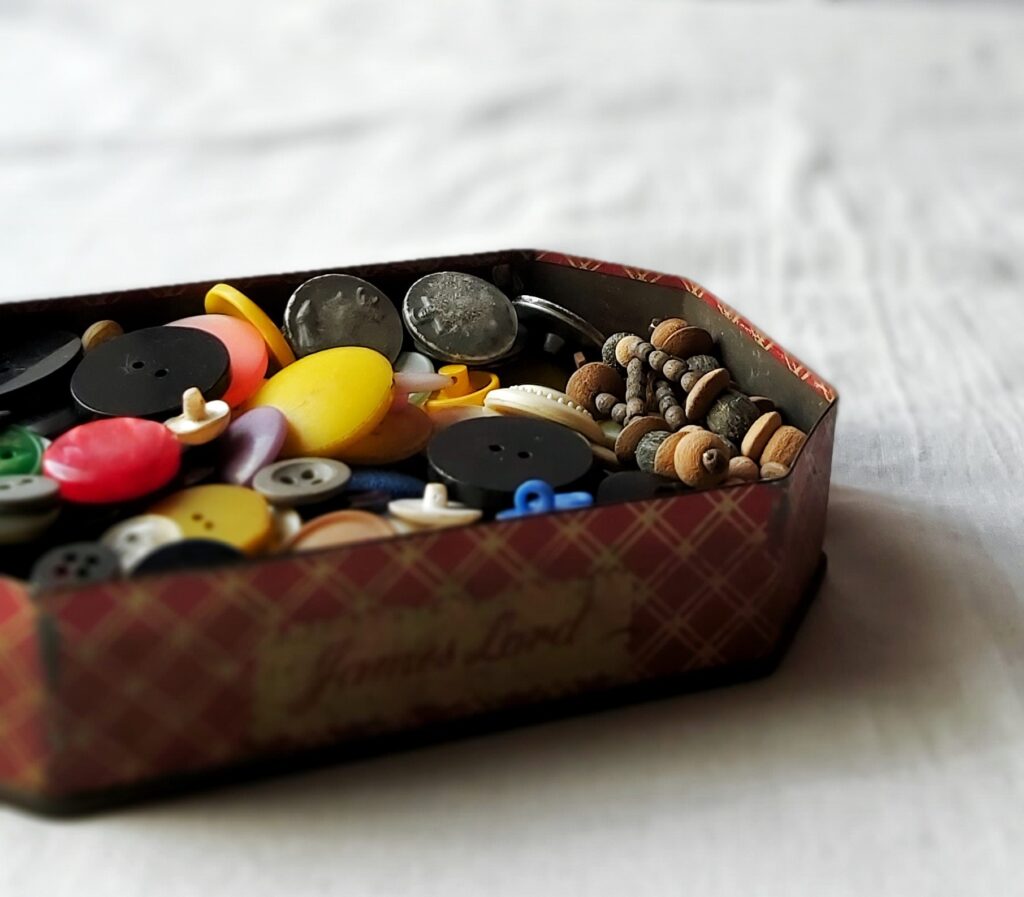
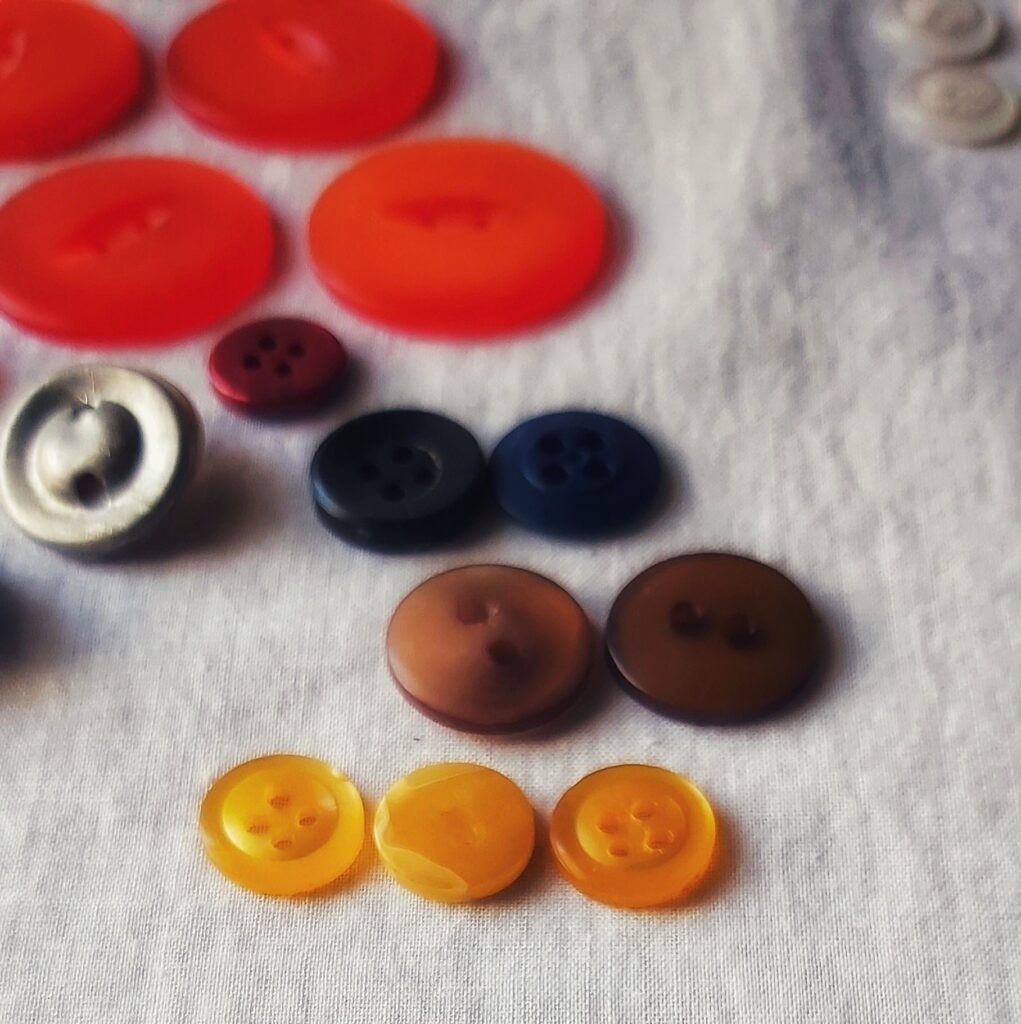
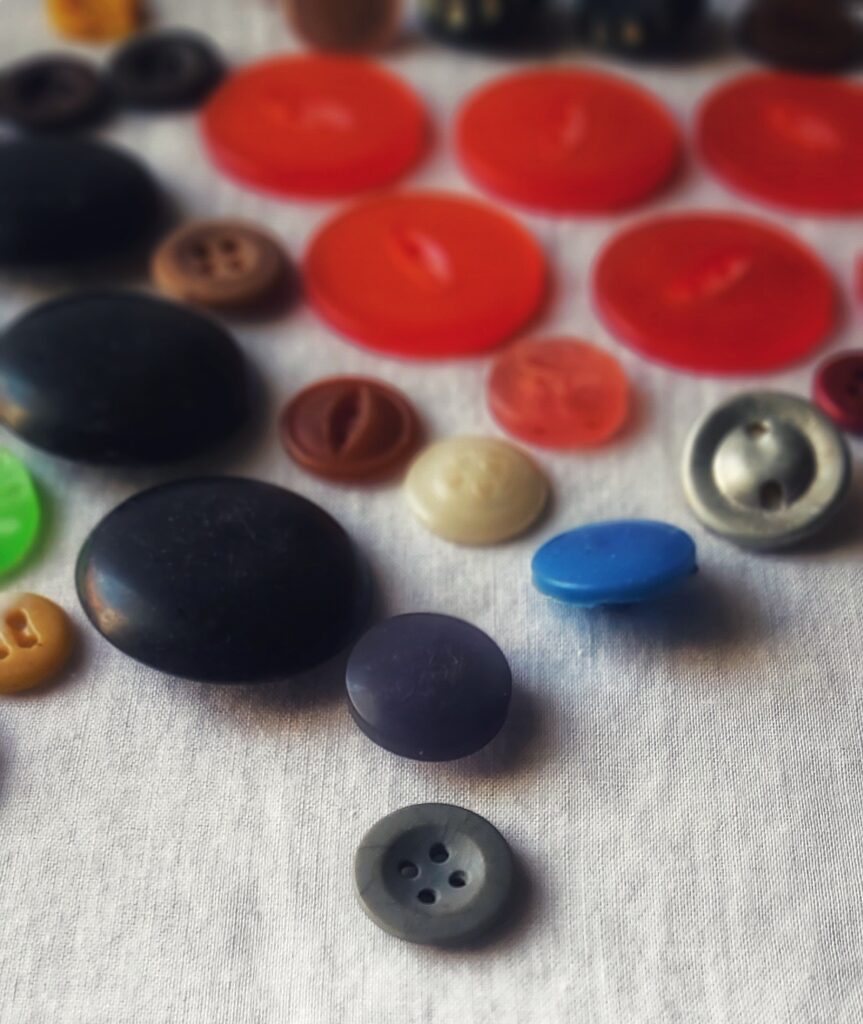
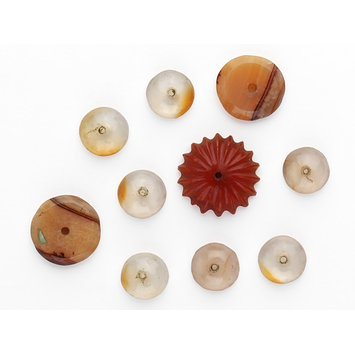
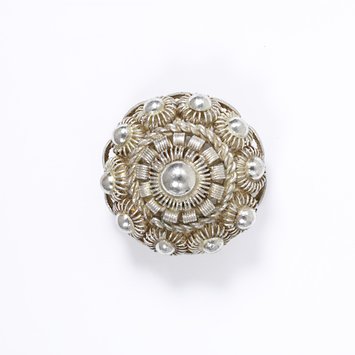
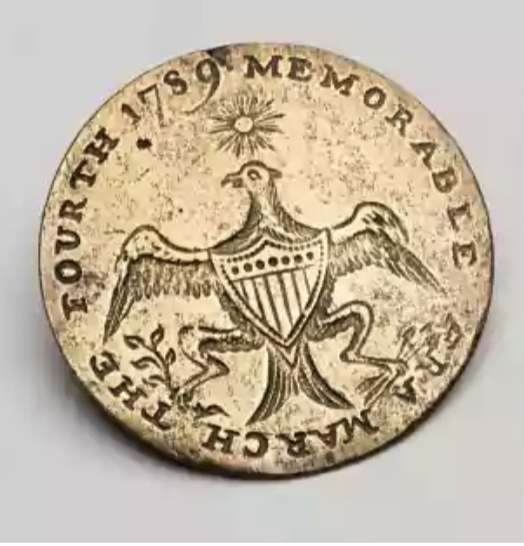
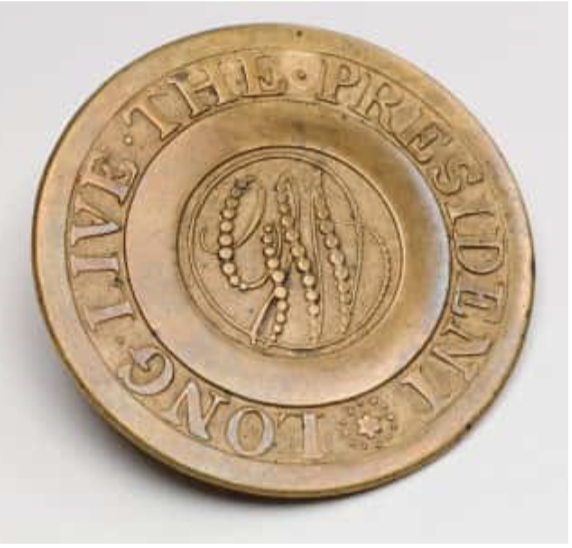
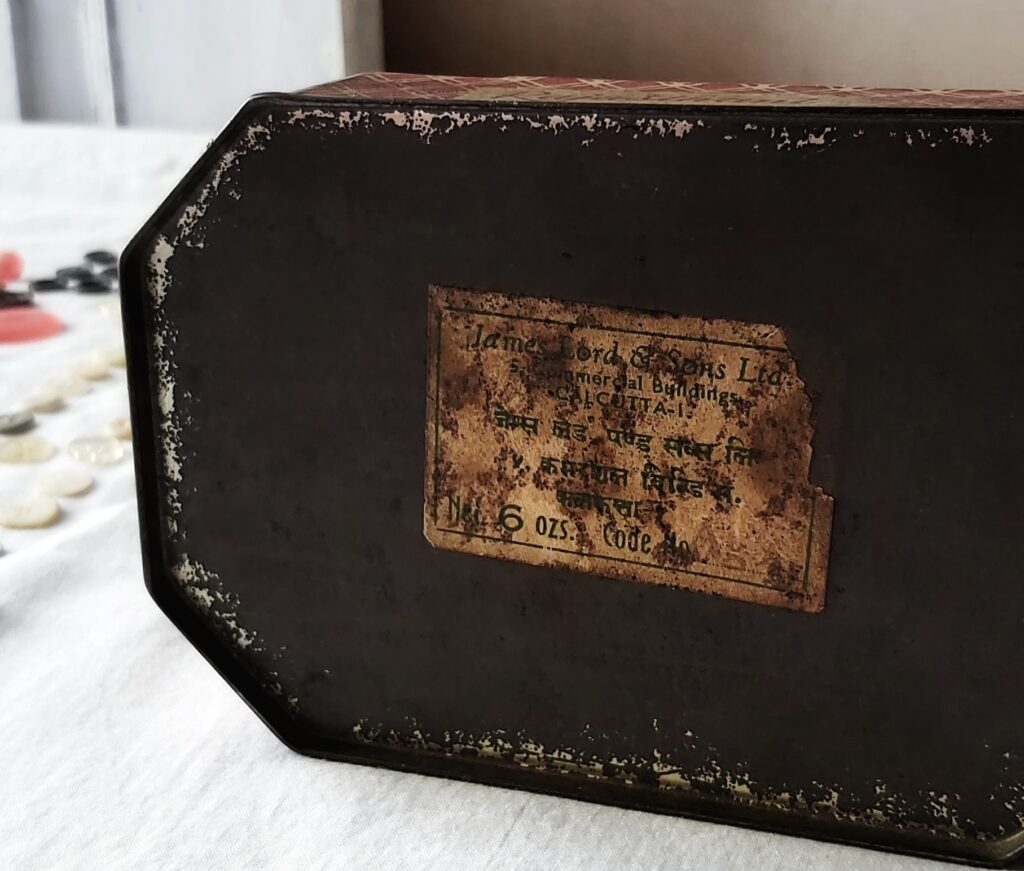
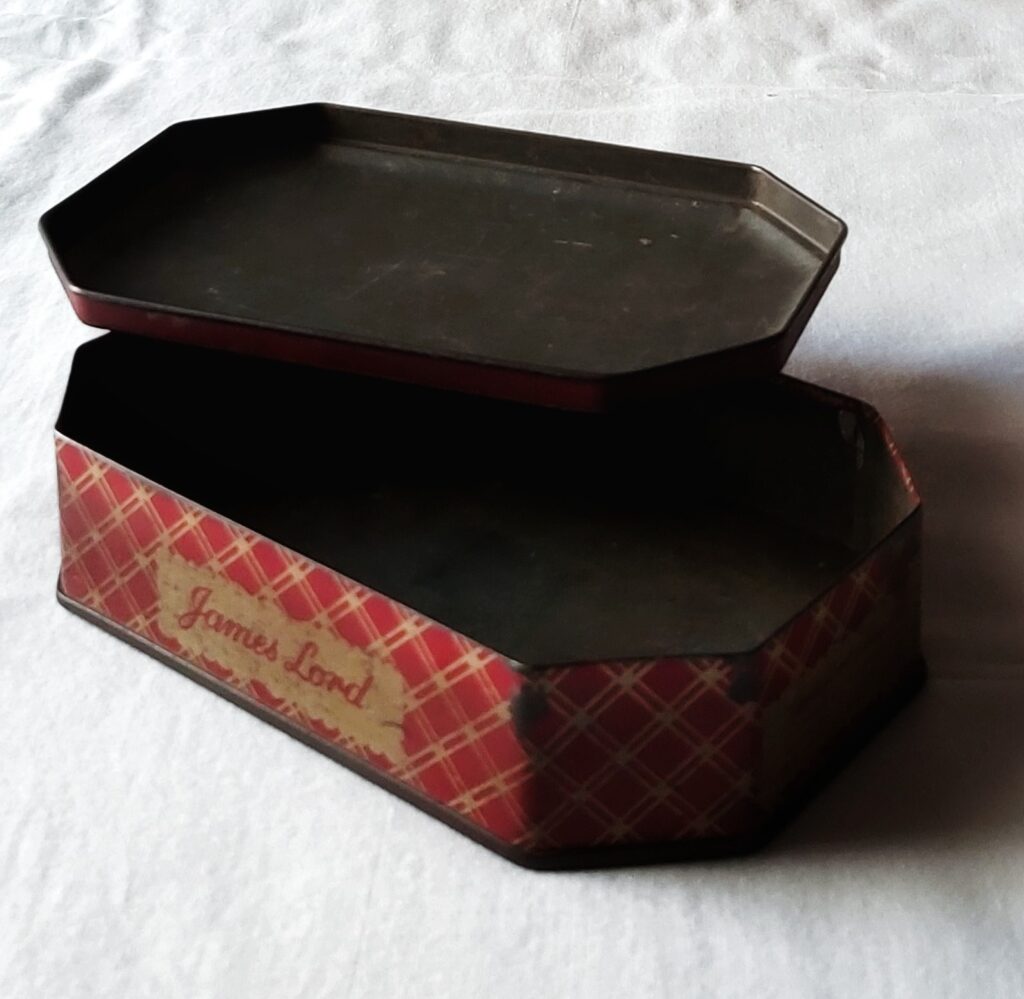
My button friend shared your story. Loved your story, loved seeing your mother’s button tin from India. Thank you for writing.